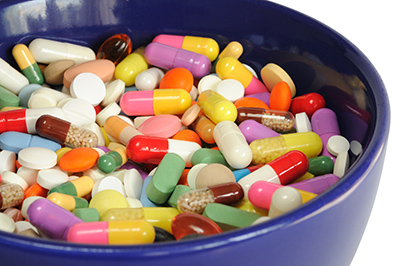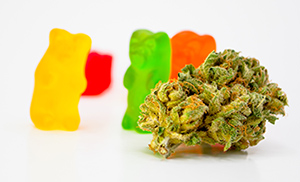With Halloween upon us, Christmas coming fast on its heels, and candy just about everywhere for the next several months, parents should take extra care to make sure that kids, especially those under age 6, don’t mistake tricks for treats, and eat medication thinking it’s candy.

Each year in Canada, an average of three kids (under age 14) die from unintentional poisoning, and another 900 are hospitalized. Medication is the most common culprit. At Halloween the risk is somewhat greater, because the candy is plentiful.
Medications that look like candy
Certain medications are very similar in appearance to certain candies. While adults may be able to pick out subtle differences in size or texture, young kids are less likely to notice, and could end up taking dangerous drugs without knowing it.
The Missouri Poison Center has an online game called “Pills vs. Candy”, which displays pictures of pills and candy side-by-side, and challenges visitors to tell them apart. Some are incredibly similar. It’s a challenging game, even for adults, and it certainly drives home the point that, at a glance, it’s not hard for a child to mistake a pill for a candy.
Regardless of specific look-alikes, children may just be drawn to brightly coloured pills and capsules. There are even documented cases of children getting sick from eating dishwasher and laundry detergent pods.
What can parents do to keep kids safe?
As parents, there are a number of things that we can do to make sure our kids don’t take medication that is not prescribed to them.
- Put it away – If kids can’t reach something, they can’t eat it. So the best way to keep your kids safe is to keep all medication (prescription, over-the-counter, even supplements) either locked away, or at least stored somewhere the kids can’t reach, like a high shelf.
- From bottle to mouth – Adults who take medication on a regular basis might set out pills on a table or counter so they don’t forget to take them. This is potentially very dangerous if there are young kids in the home. Even if you don’t lock your meds away, keeping them in the child-proof bottles until it’s time to take them is a good way to protect the little ones.
- Medicine is not “yummy” – When our kids are sick, in order to get them to take their medication, we might be tempted to tell them that it’s “yummy” or even that it’s candy. This is not a winning strategy in the long run, as it just adds to the confusion.
Edible cannabis – drugs intended to look like treats

With cannabis products now legal for Canadian adults, this introduces a new danger, as cannabis is frequently sold in the form of edibles like gummies, lollipops, brownies and cookies. If you keep edibles in your home, make sure that they are always clearly labeled (to protect the adults), and that they are never within reach of children.
Intentional prescription drug abuse
Our best efforts to safeguard our children could be all for naught if they choose to take prescription drugs that are not theirs, or abuse drugs that they were prescribed. If you have older children and are concerned that they may be abusing prescription drugs, the Centre for Addiction and Mental Health (CAMH) has a wealth of resources.
